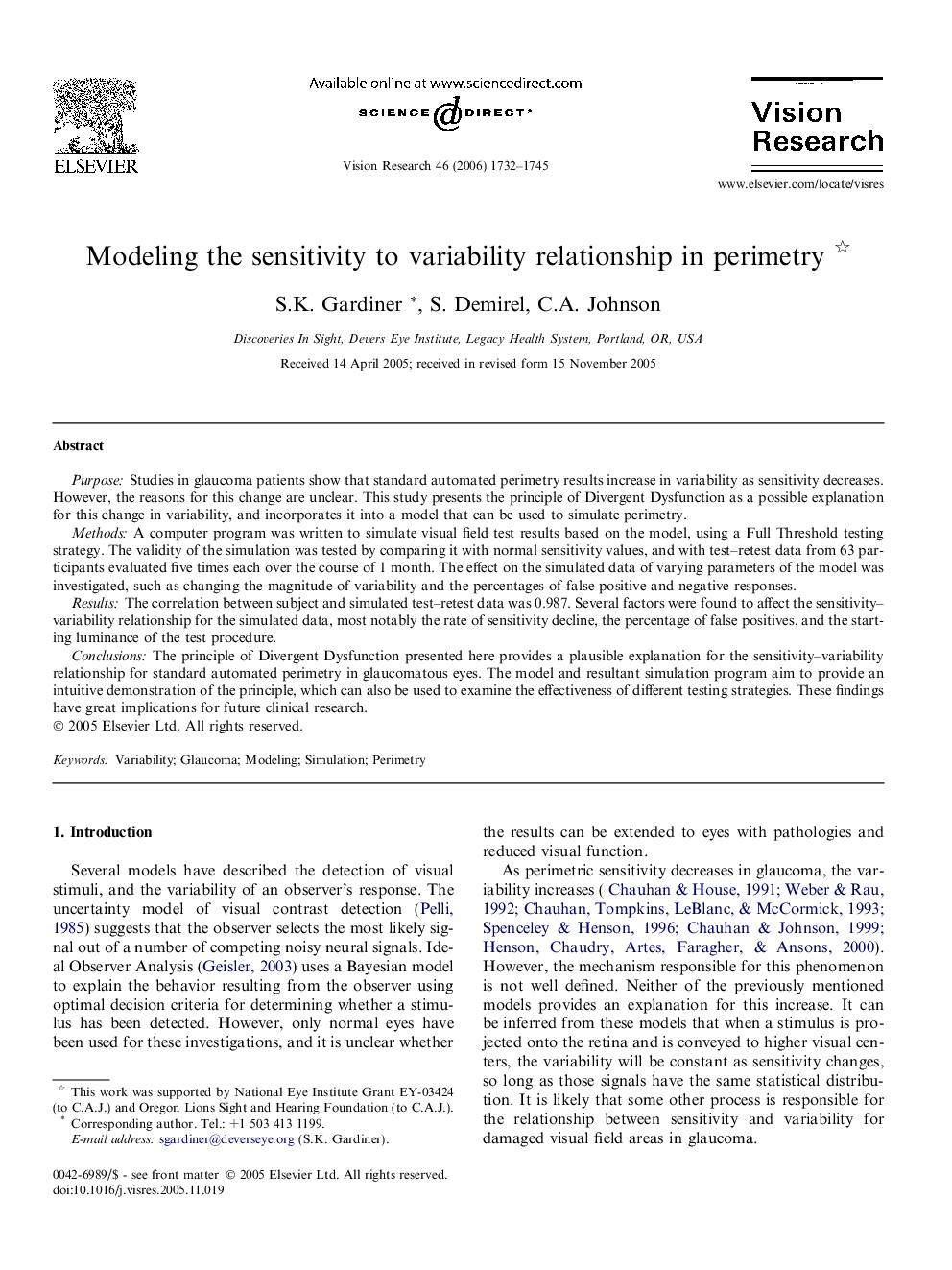| Article ID | Journal | Published Year | Pages | File Type |
|---|---|---|---|---|
| 4036721 | Vision Research | 2006 | 14 Pages |
PurposeStudies in glaucoma patients show that standard automated perimetry results increase in variability as sensitivity decreases. However, the reasons for this change are unclear. This study presents the principle of Divergent Dysfunction as a possible explanation for this change in variability, and incorporates it into a model that can be used to simulate perimetry.MethodsA computer program was written to simulate visual field test results based on the model, using a Full Threshold testing strategy. The validity of the simulation was tested by comparing it with normal sensitivity values, and with test–retest data from 63 participants evaluated five times each over the course of 1 month. The effect on the simulated data of varying parameters of the model was investigated, such as changing the magnitude of variability and the percentages of false positive and negative responses.ResultsThe correlation between subject and simulated test–retest data was 0.987. Several factors were found to affect the sensitivity–variability relationship for the simulated data, most notably the rate of sensitivity decline, the percentage of false positives, and the starting luminance of the test procedure.ConclusionsThe principle of Divergent Dysfunction presented here provides a plausible explanation for the sensitivity–variability relationship for standard automated perimetry in glaucomatous eyes. The model and resultant simulation program aim to provide an intuitive demonstration of the principle, which can also be used to examine the effectiveness of different testing strategies. These findings have great implications for future clinical research.
